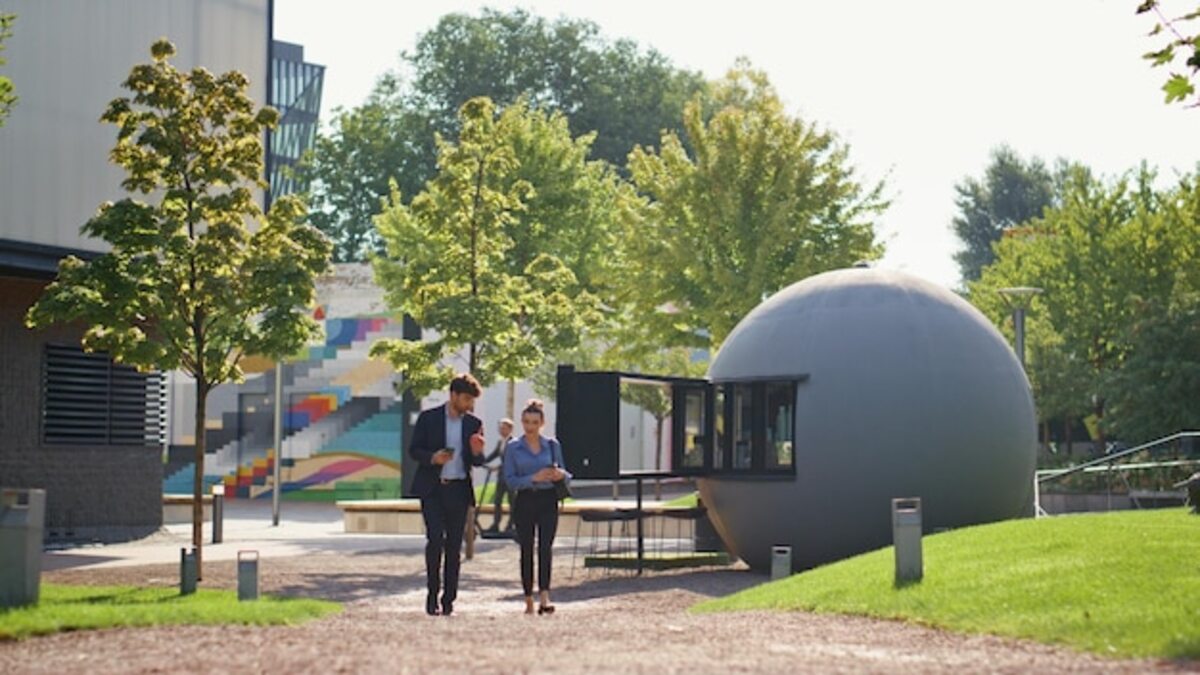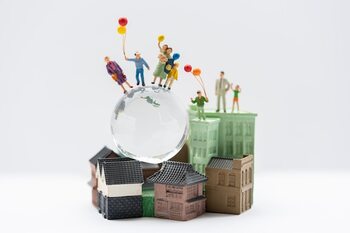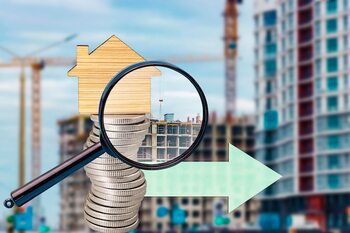The hidden value of community spaces in your home

The hidden value of community spaces in your home is a crucial aspect that often goes unnoticed. These spaces not only promote coexistence and a sense of belonging but can also significantly increase the value of your property. By investing in well-designed shared areas, you are creating an environment where relationships thrive and the appreciation of your home is enhanced. Discover how these community nooks transform not only your quality of life but also the financial future of your home.
The importance of design in community spaces
The design of community spaces is fundamental for creating environments that invite interaction and a sense of community. A well-planned area should not only be functional but also aesthetically appealing, which can influence how residents feel when using it. Elements such as the arrangement of furniture, the choice of colors and materials, as well as the integration of green spaces, play a crucial role in creating a welcoming environment. By considering these aspects, greater participation in community activities is encouraged, and the bond between neighbors is strengthened, which is essential for social well-being.
Additionally, good design not only benefits the people living in the area; it can also be advantageous from an economic perspective. Well-designed common spaces can increase the perceived value of the neighborhood and even attract potential buyers interested in properties with appealing shared areas. The quality of design can make the difference between a forgotten space and a vibrant one where people want to spend time. Therefore, investing in these spaces is not just an aesthetic matter; it is a smart strategy that enhances both the quality of life and the financial future of your home.
2. How shared spaces foster interpersonal relationships
Shared spaces, such as gardens, common lounges, or play areas, act as catalysts for interpersonal relationships. When residents meet in these environments, the opportunity arises to interact and get to know each other beyond the daily greeting. Sharing a coffee in the lounge area or enjoying an afternoon in the park can facilitate conversations that build meaningful connections. These informal moments can lead to lasting friendships and a support network within the community, which in turn creates a more harmonious and supportive environment.
Additionally, community spaces provide an ideal setting for group activities that promote collaboration and teamwork. Organizing events like neighborhood fairs, outdoor movie nights, or group classes not only strengthens the sense of belonging but also allows people to connect over shared interests. These interactions not only enrich the social life of residents but also create a sense of safety and trust among them. As relationships develop in these shared spaces, a more cohesive community is generated where each individual feels valued and integrated.
3. Green spaces: a boost for community health and well-being
Green spaces are much more than just simple recreational areas; they represent an essential refuge for the mental and physical health of communities. The presence of gardens, parks, and landscaped areas not only beautifies the environment but also provides residents with a place to disconnect from the daily hustle. Studies have shown that contact with nature can reduce stress, improve mood, and encourage greater physical activity. By creating accessible and well-maintained green spaces, a healthy lifestyle is promoted that benefits both individuals and the social fabric as a whole.
Additionally, these spaces serve as meeting points that strengthen connections among neighbors. By bringing together people with common interests in outdoor activities, a sense of community is fostered that is essential for overall well-being. Whether through family picnics, community workshops, or simply enjoying the outdoors, these places allow for meaningful interactions that nurture lasting relationships. In this sense, green spaces not only improve immediate quality of life but also contribute to social cohesion and the development of a robust community identity that can enhance overall satisfaction with home and its surroundings.
4. The influence of community spaces on real estate appreciation
Community spaces, such as parks, shared gardens, and recreational areas, play a fundamental role in the perception of property value. These places not only provide an aesthetically pleasing environment but also encourage social interactions among residents. When communities have well-maintained and accessible spaces, an atmosphere is created that attracts potential buyers and renters, thereby increasing real estate demand. Proximity to green areas or recreational zones can be a deciding factor for those looking to settle in a new community, making them key elements in valuing a property.
In addition to improving the quality of life for its inhabitants, community spaces are considered a strategic investment by real estate developers. A careful design that includes areas for social interaction can significantly increase interest in a property and its subsequent valuation in the market. Studies show that homes located near these spaces enjoy an increase in their value due to the growing desire for environments that promote well-being and social interaction. Thus, by integrating attractive and functional common areas in your home or community, not only is the level of satisfaction among residents elevated, but a proper long-term appreciation is also ensured.
5. Successful examples of communities with excellent shared spaces
One of the most notable examples of communities with successful shared spaces is the development of "The High Line" in New York. This elevated park, built on an old railway line, has transformed a forgotten urban space into a vibrant meeting point for residents and tourists. With ample green areas, benches, and spaces for cultural activities, the High Line has not only improved the quality of life for the neighbors but has also increased property values in its surroundings. Nearby properties have seen their prices soar due to the creation of this community space that fosters social interaction and enjoyment of the outdoors.
Another notable case is the "Battersea Power Station" project in London, where an old industrial plant has been revitalized into a residential complex with various shared areas. This development includes community gardens, recreational zones, and spaces for social events that not only provide a place to relax and socialize but also promote a sense of community among residents. By integrating these shared areas into its design, Battersea has created a unique appeal that enhances both the well-being of its inhabitants and the property value. These examples demonstrate how smart investments in community spaces can transform both daily life and the local economy.
6. Activities you can do in community spaces
Community spaces offer a wide range of activities that can strengthen cohesion among neighbors and enrich life at home. From organized clean-up days to cultural events, these spots become the ideal setting to promote collaboration and a sense of community. Activities such as swap fairs, outdoor movie nights, or educational workshops not only provide entertainment but also allow residents to share skills and knowledge. This type of interaction not only improves personal relationships but also creates a more welcoming environment where everyone feels valued.
Additionally, community spaces are perfect for promoting healthy lifestyles. The creation of recreational areas where group classes such as yoga, pilates, or team sports can be held encourages neighbors to stay active and take care of their physical well-being. You can also consider organizing community walks or outdoor book clubs that promote exercise and social interaction at the same time. These activities not only improve individual quality of life but also contribute to creating a vibrant and dynamic environment that increases the overall appeal of the neighborhood and, therefore, the value of surrounding properties.
7. The role of the community in neighborhood safety
Safety in a neighborhood is a fundamental aspect that is directly influenced by the cohesion and commitment of its community. When residents know each other and share common spaces, such as parks, playgrounds, or community centers, a support network is established that acts as a natural surveillance system. This connection not only allows neighbors to look out for one another but also encourages communication about potential security issues. An environment where people are attentive to what is happening around them creates a sense of trust and well-being, thereby increasing the perceived value of the area.
Additionally, active participation in community activities strengthens the sense of belonging among residents, which can become a deterrent to criminal behavior. Local events, such as fairs or neighborhood meetings, encourage people to get involved not only in improving their shared spaces but also in the collective monitoring of the neighborhood. This collaboration can lead to initiatives such as volunteer patrol groups or early warning programs for suspicious situations. In this way, investing in community spaces not only beautifies the environment; it also creates a protective shield that enhances both the quality of life and the economic value of the home.
8. Common spaces as a tool for resolving neighborhood conflicts
Common spaces play a fundamental role in resolving neighborhood conflicts, offering a setting where residents can interact constructively. When people find themselves in shared environments, such as parks, gardens, or recreational areas, they have the opportunity to get to know each other better and establish relationships based on trust and mutual respect. These informal encounters allow dialogues about common concerns to emerge, which can be key to resolving misunderstandings before they escalate into larger issues. Thus, a well-designed community space not only promotes peaceful coexistence but also acts as a natural mediator for any tension that may arise between neighbors. Furthermore, by fostering a culture of participation and collaboration in these shared spaces, support networks among residents are created. Organizing community activities or social events within these places not only strengthens the sense of belonging but also provides opportunities to address sensitive issues. When neighbors work together on common projects or engage in recreational activities, they develop empathy and gain a better understanding of different perspectives. This transforms common spaces into true catalysts for social cohesion and neighborhood harmony, making them valuable tools for preventing and resolving conflicts before they escalate.
9. Strategies to improve your common areas without large investments
One of the most effective ways to improve your common areas without making large investments is through painting and the use of decorative elements. A simple change of color on the walls can revitalize a space, making it look more welcoming and attractive. In addition, adding decorative touches like plants, cushions, or wall art not only beautifies the environment, but also creates a warmer and friendlier atmosphere. These changes can be made by the residents themselves, thus fostering greater participation and a sense of community among neighbors.
Another valuable strategy is the creation of functional zones that promote outdoor activities. Incorporating simple furniture like picnic tables and chairs or benches in community gardens can encourage residents to socialize and enjoy the space. Additionally, organizing regular community events, such as cleanup days or informal gatherings, doesn't require a large financial investment but can strengthen relationships among neighbors. By making small practical adjustments and fostering collaboration, you can significantly transform the value and functionality of your common areas without needing to spend large sums.
10. The future of community spaces and their impact on urban development
The future of community spaces is emerging as a key element in urban development, as they are meant to evolve and adapt to the changing needs of society. As cities continue to grow and diversify, the integration of well-designed community spaces becomes essential for fostering greater social cohesion. These places not only provide a refuge for interaction but also serve as platforms for cultural, educational, and recreational activities. In this context, the inclusion of green areas, plazas, and community centers helps create more sustainable and environmentally friendly environments.
Moreover, the impact of these spaces goes beyond social well-being; it also influences the local economy. An urban environment that prioritizes community spaces can attract new residents and businesses, thereby increasing the overall value of the area. Properties located near well-maintained shared spaces often experience a significant increase in their appreciation. This phenomenon transforms not only how we perceive our homes but also how we interact with our environment. By valuing and investing in these community spaces today, we are building a lasting legacy that will benefit both current and future generations.



